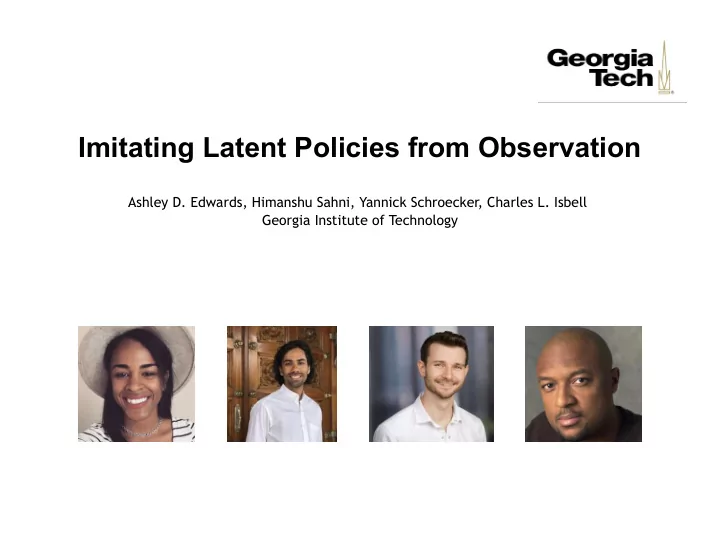

Imitating Latent Policies from Observation Ashley D. Edwards, Himanshu Sahni, Yannick Schroecker, Charles L. Isbell Georgia Institute of Technology
Introduction • Imitation from Observation enables learning from state sequences • Typical approaches need extensive environment interactions • Humans can learn policies just by watching
Approach Given: Sequence of noisy expert observations Assumption: Discrete actions with deterministic transitions • z is defined as a latent action that caused a transition to occur • z can imply a real action or some other type of transition Action: Right Action: Right Z = 1 Z = 2 • A latent policy is the probability of taking a latent action in some state
Approach ILPO 1. Given sequence of observations, learn latent policy 2. Use a few environment steps to align actions
Approach ILPO 1. Given sequence of observations, learn latent policy 2. Use a few environment steps to align actions Latent policy network
Approach ILPO 1. Given sequence of observations, learn latent policy 2. Use a few environment steps to align actions (b) Action Remapping Network Action remapping network
Experiments: Classic Control • Access to expert observations only • No reward function used in approach • Comparison to Behavioral Cloning from Observation [1] [1] Torabi, Faraz, Garrett Warnell, and Peter Stone. "Behavioral cloning from observation." Proceedings of the 27th International Joint Conference on Artificial Intelligence . AAAI Press, 2018.
Experiments: CoinRun
Experiments: CoinRun
Thank You! Room: Pacific Ballroom at 6:30pm (Today)! Poster: #33
Recommend
More recommend